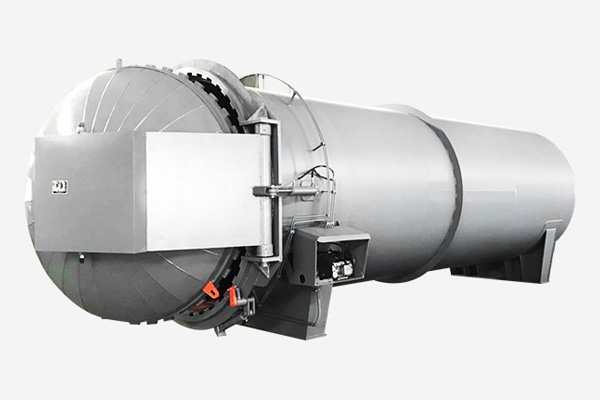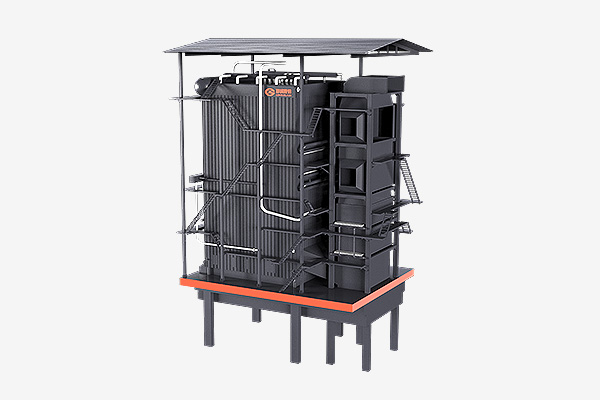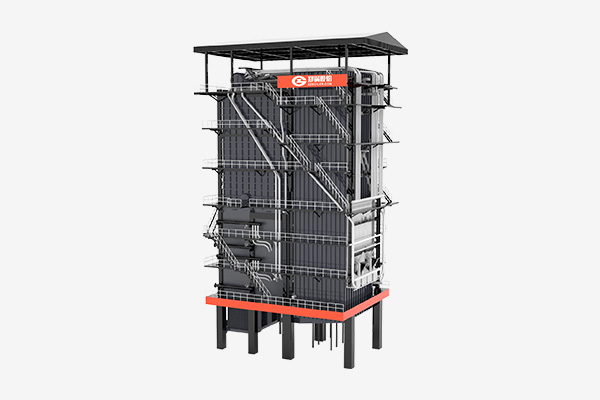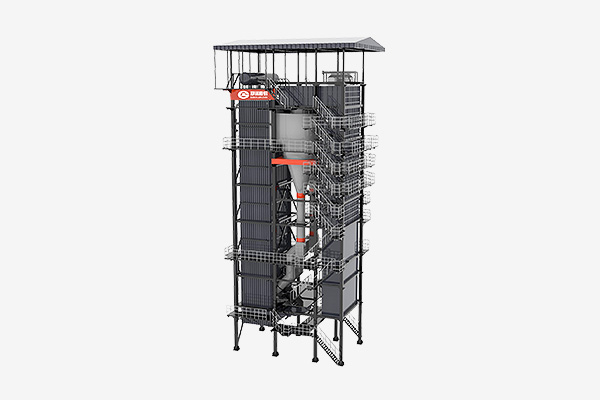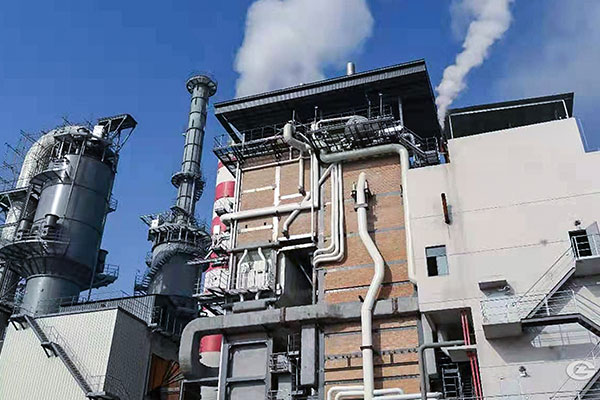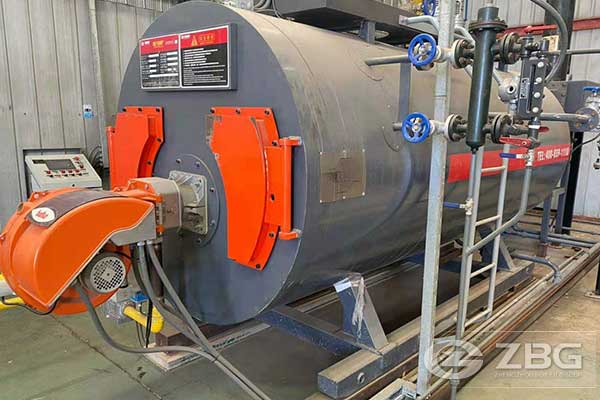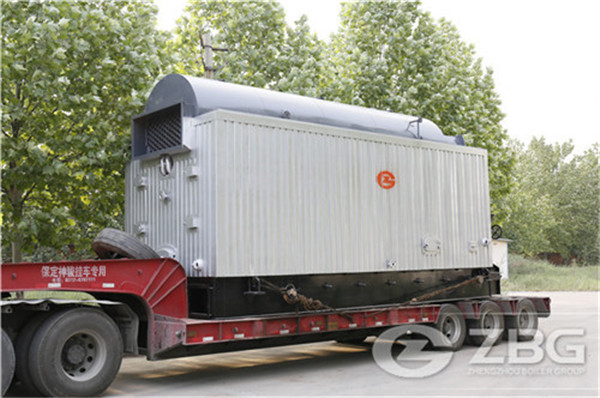2 sets of 35t/h circulating fluidized bed boiler flue gas desulfurization project
2023-10-30 08:40:32The external desulfurization system of ZBG Group's two 35t/h circulating fluidized bed boilers includes the technical requirements for the functional design, structure, performance, control, equipment installation, and debugging of the external desulfurization system, desulfurization body and auxiliary equipment. In short, in addition to Apart from civil foundation design and civil foundation construction, it is a turnkey project. The following introduces ZBG Group ZG-35/3.82-M technical parameters and flue gas desulfurization project.
1. 35t/h boiler equipment and parameters
| Rated evaporation | t/h | 35 |
| Drum working pressure | MPa | 4.22 |
| superheater outlet pressure | MPa | 3.82 |
| superheated steam temperature | ℃ | 450 |
| Feed water temperature | ℃ | 100 |
| cold air temperature | ℃ | 20 |
| exhaust temperature | ℃ | 166.8 |
| Boiler thermal efficiency | % | 83.9 |
| Boiler unit flue gas resistance | Well | 950 |
| air preheater air resistance | Well | 6800 |
2. Flue gas desulfurization
At present, my country's coal-fired boiler flue gas desulfurization technology can be divided into four categories; (1) Pre-combustion control-raw coal purification. (2) Control during combustion - fluidized bed combustion (CFB) and absorbent spraying in the furnace. (3) Post-combustion control - flue gas desulfurization. (4) New technologies (such as coal gasification/combined cycle systems, liquid slagging burners). Among them, post-combustion flue gas desulfurization technology is mainly used. Flue gas desulfurization is dominated by wet desulfurization technology. Let’s take a look at a comparison of several common boiler desulfurization processes:
| Desulfurization process name | Process principle | Process advantages | Process shortcomings |
| limestone gypsum wet process | Use limestone powder slurry to wash the flue gas, react the limestone with SO2 in the flue gas to generate calcium sulfite, remove the SO2 in the flue gas, and then oxidize the calcium sulfite to generate gypsum | High desulfurization rate: ≥95%, mature technology, suitable for all coal types, stable operation, good operation flexibility, easy to obtain desulfurizer, low operating cost, and the by-product gypsum can be comprehensively utilized without causing secondary pollution | The process is long and the investment is high |
| Rotary Spray Drying | Make lime slurry from quicklime, spray the lime slurry into the flue gas, and react calcium hydroxide with SO2 in the flue gas to generate calcium sulfite. | The process flow is simpler than the limestone gypsum method and the investment is smaller | The desulfurization rate is low: about 70-80%, the operating flexibility is small, the calcium-sulfur ratio is high, the operating cost is high, the by-products cannot be used and secondary pollution is prone to occur (calcium sulfite decomposition) |
| Calcium spray tail humidification method in furnace | Limestone powder is directly injected into the boiler furnace. The limestone powder decomposes into calcium oxide at high temperature. The calcium oxide reacts with SO2 in the flue gas to generate calcium sulfite. In order to improve the desulfurization rate, water mist is sprayed at the tail to increase the reaction activity between calcium oxide and SO2 in the flue gas. | The process flow is simpler than the limestone gypsum method and the investment is smaller | Low desulfurization rate: about 70%, small operating flexibility, high calcium-sulfur ratio, high operating cost, unusable by-products and prone to secondary pollution (decomposition of calcium sulfite) |
| Flue gas circulating fluidized bed desulfurization process | In the fluidized bed, lime powder is added to the flue gas in a certain proportion, so that the lime powder is in a fluidized state in the flue gas and reacts repeatedly to generate calcium sulfite. | High calcium utilization rate, no moving parts, low investment | Low desulfurization rate: ≥80%, higher requirements for lime purity, domestic lime is not easy to guarantee quality, flue gas pressure head loss is large, and boiler operation will be affected due to uneven feeding |
| Seawater desulfurization process | Use seawater to wash flue gas to absorb SO2 gas in flue gas | The desulfurization rate is relatively high: ≥90%, the process is simple, the investment is low, the floor space is small, and the operating cost is low | Due to geographical restrictions, it can only be used in coastal areas. Only suitable for medium and low-sulfur coal types, with secondary pollution |
| Electron beam desulfurization process | Cool the flue gas to about 60°C and irradiate it with electron beams; generate free radicals, generate sulfuric acid and nitric acid, and then react with the added ammonia gas to generate ammonium sulfate and ammonium nitrate. Collect ammonium sulfate and ammonium nitrate powder and granulate them to make compound fertilizer | High desulfurization rate: ≥90%, simultaneous desulfurization and denitrification, the by-product is an excellent compound fertilizer, no waste is produced | The investment is high because the equipment components are not up to standard, so it will be more difficult for large-scale units. |
| Ammonia washing desulfurization process | Using various concentrations of ammonia (or liquid ammonia) as desulfurizer, the generated ammonium sulfate slurry is transported to the concentration and dehydration treatment system. | High desulfurization rate: ≥95%; compared with calcium-based desulfurization, the system is simple, the equipment is small in size, and the energy consumption is low; the by-product ammonium sulfate is a common chemical fertilizer; no secondary pollution is generated; desulfurization can remove part of the NOx | Ammonia is easily volatile; equipment is prone to corrosion and anti-corrosion costs are high; the generation of aerosols needs to be prevented |
| Ammonium Phosphate Fertilizer Flue Gas Desulfurization Process | Let the flue gas pass through the activated carbon with catalyst, the SO2 in the flue gas is catalyzed into SO3 and adsorbed in the activated carbon, the SO3 in the activated carbon is washed with water to become dilute sulfuric acid and the activated carbon is regenerated. | The desulfurization rate is high: ≥90%, the process is simple, there is no moving equipment, the investment is low, and the operating cost is low. | The by-product is dilute sulfuric acid, which is not suitable for transportation and can only be digested on site. Activated carbon needs to be replaced every 5 years. |
For all inquiries, please fill in the form below (* are required) to send us a brief message, and we will get back to you as soon as possible.
